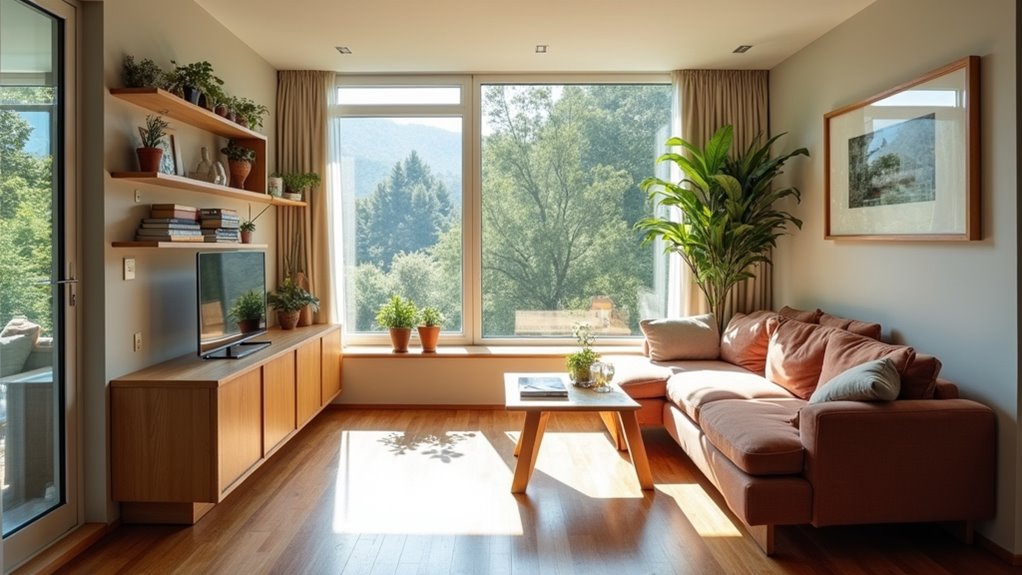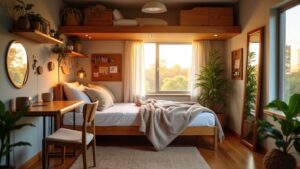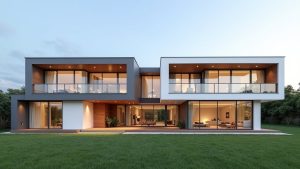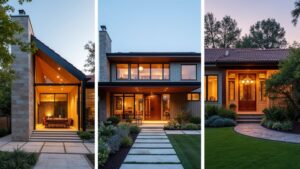Compact house design ideas maximize limited living spaces by incorporating multifunctional furniture and innovative storage solutions. Utilizing open floor plans enhances light flow and sociability, while vertical space utilization keeps clutter at bay. Clever kitchen configurations foster efficiency with pull-out shelves and slimline appliances. Sustainable materials ensure environmental consciousness, paired with smart home integrations for seamless living. Explore how these concepts can transform small living environments into stylish, functional havens that cater to modern needs.
Key Takeaways
- Utilize multifunctional furniture like storage beds and convertible desks to maximize space while reducing clutter in small living areas.
- Incorporate modular storage solutions and vertical shelving to optimize wall height and create custom configurations for your storage needs.
- Design open floor plans to enhance traffic flow, improve sociability, and allow for flexible furniture arrangements tailored to your lifestyle.
- Implement compact kitchen layouts such as galley or L-shaped designs, using pull-out shelves and lighter color schemes to maintain functionality and a sense of space.
- Make use of vertical space with lofted sleeping areas and ceiling storage to separate living zones and increase usable square footage.
Multi-Purpose Furniture Solutions
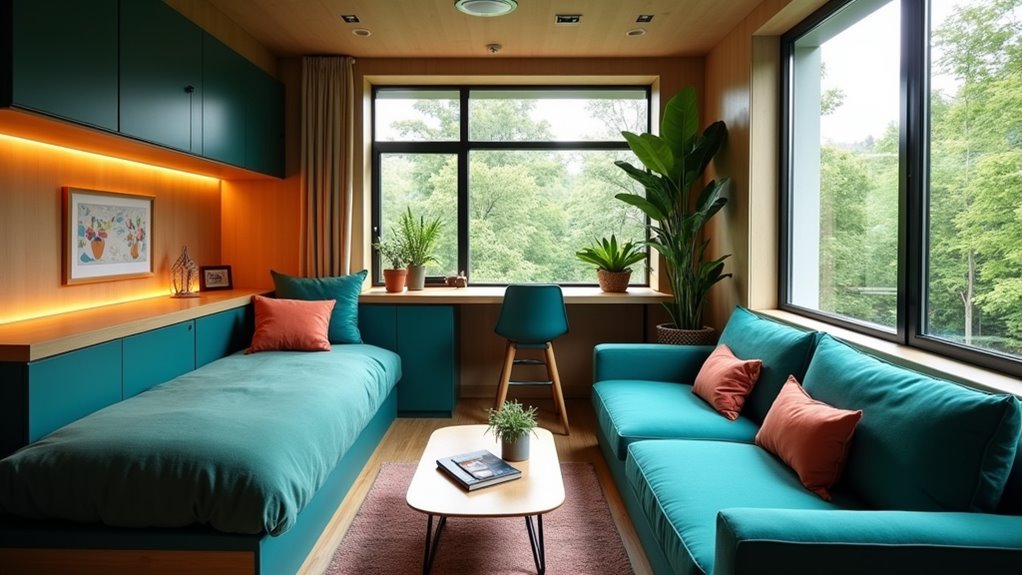
In today’s fast-paced urban landscape, the allure of multifunctional furniture solutions has captured the attention of many who seek to optimize limited living spaces. Space-saving designs have become essential, particularly as average home sizes shrink. These innovations allow for flexible layouts, where a single piece can transition seamlessly from a sofa to a bed, or a table may double as a workspace. As urban populations are projected to increase significantly, the demand for multifunctional furniture will likely continue to rise. With the Small Space Furniture Market’s projected growth driven by urbanization, consumers are increasingly seeking intelligent and eco-friendly furniture options. Additionally, hidden furniture compartments can enhance utility by providing storage in otherwise unused spaces.
In studio and micro-apartments, multifunctional furniture not only maximizes utility but also minimizes clutter, adapting to evolving lifestyles. Essential items include storage beds, fold-down tables, and convertible desks, each designed to support dynamic living arrangements, providing comfort and usability in confined areas, while gracefully merging form and function in stylish, compact living environments.
Innovative Storage Ideas
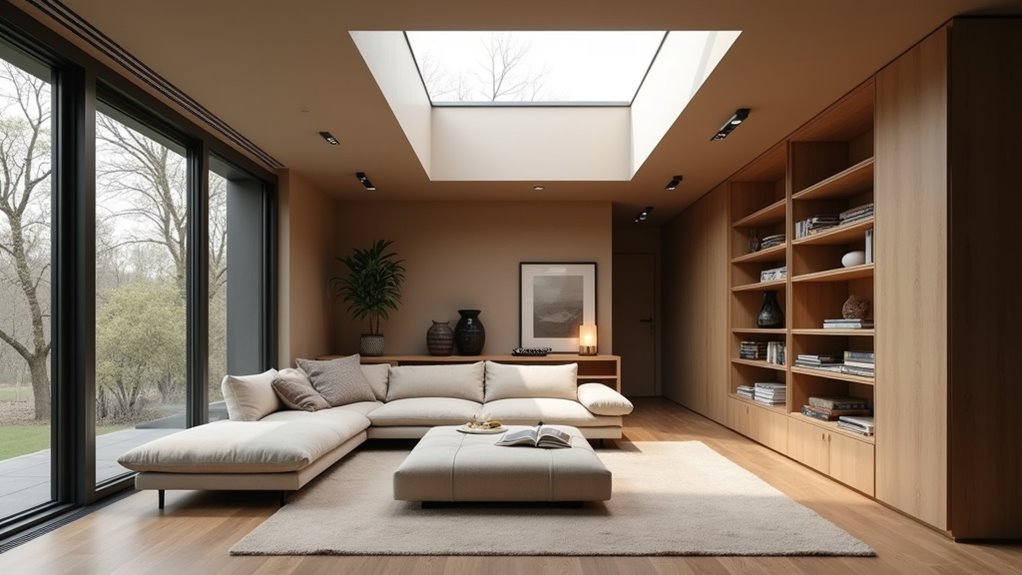
Innovative storage ideas have emerged as essential solutions for those navigating the challenges of compact living. Homeowners are increasingly relying on creative designs that enhance functionality without compromising aesthetics.
Key concepts include:
- Modular units that adapt to various spaces, allowing for custom configurations tailored to individual needs.
- Hidden compartments integrated into furniture, cleverly concealing items while maintaining a clean look.
- Vertical shelving that takes advantage of wall height, providing ample storage without taking up floor space.
These ideas not only maximize available room but also create a sense of organization, essential in smaller living areas. Additionally, incorporating strategic storage solutions like lift-top coffee tables ensures even the smallest spaces remain organized and uncluttered.
Open Floor Plan Design
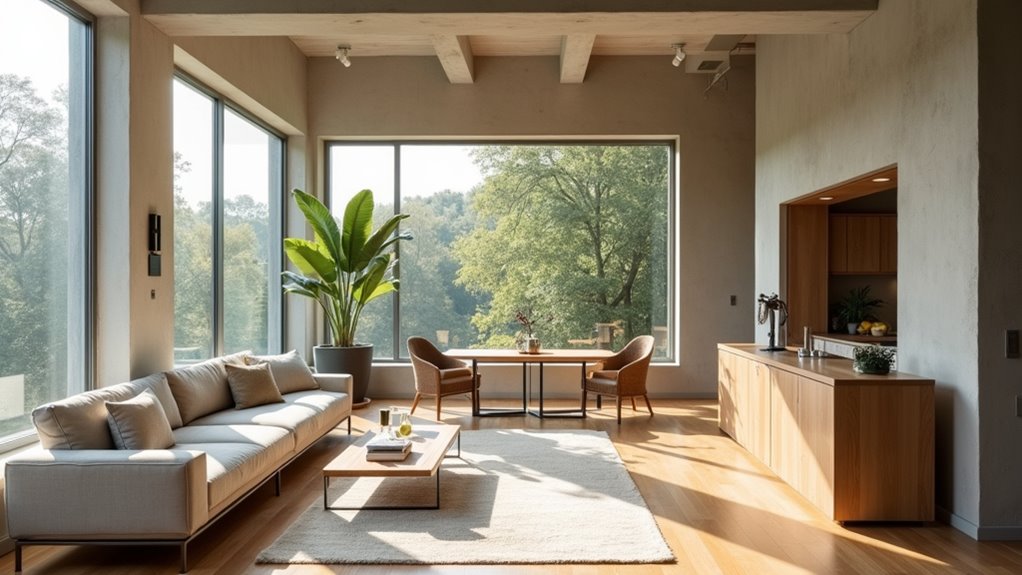
Compact living spaces benefit greatly from the principles of open floor plan design, which fosters a seamless environment where different areas of the home blend harmoniously.
The open plan benefits include enhanced traffic flow, leading to more accessible navigation, especially for families and individuals using mobility aids. Improved sociability arises as conversations traverse the unified space, facilitating easy supervision of children during daily activities.
The abundant natural light and cross-ventilation create a welcoming atmosphere, while flexible zoning allows for versatile furniture arrangements tailored to varied needs. Incorporating elements of biophilic design can further enhance the connection with nature, promoting well-being and reducing stress.
This adaptability not only supports minimalism by revealing clutter but also enhances the home’s functionality. Overall, open floor plans maximize space efficiency, resulting in stylish, livable environments.
Vertical Space Utilization
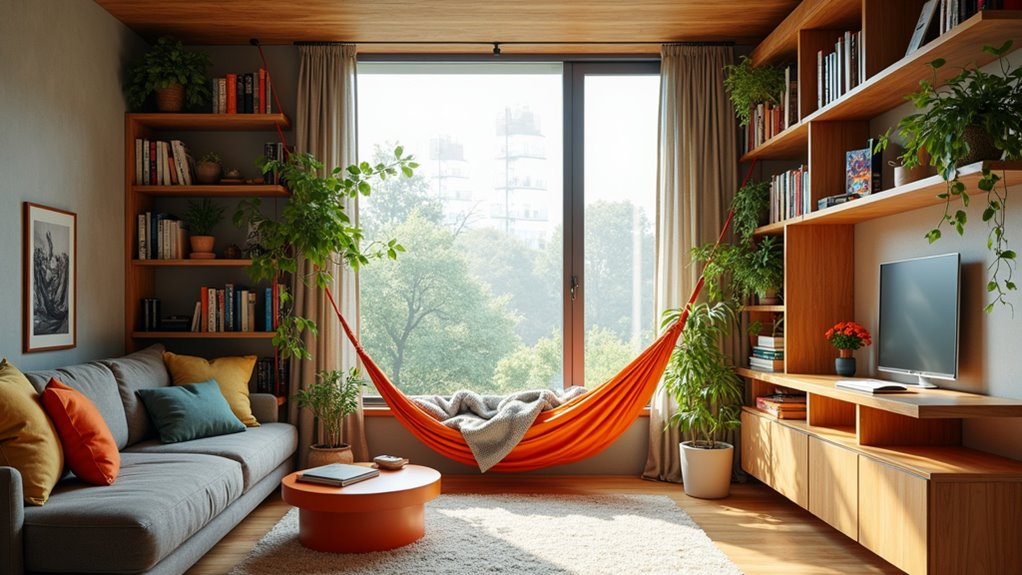
As living spaces continue to shrink, the importance of utilizing vertical space becomes increasingly apparent. By maximizing height, homeowners can enhance functionality without sacrificing precious floor area.
Effective strategies include:
- Installing tall shelving units and ceiling storage to keep clutter at bay while showcasing decorative items.
- Creating vertical gardens that not only purify the air but also add a lush aesthetic to compact environments.
- Employing lofted sleeping areas or mezzanines to separate living zones while maximizing usable square footage.
Such innovative designs transform small living spaces into multi-dimensional havens, prioritizing both style and utility.
Through thoughtful vertical space utilization, every inch of a compact home can serve a purpose, contributing to a harmonious and organized living experience.
Compact Kitchen Configurations
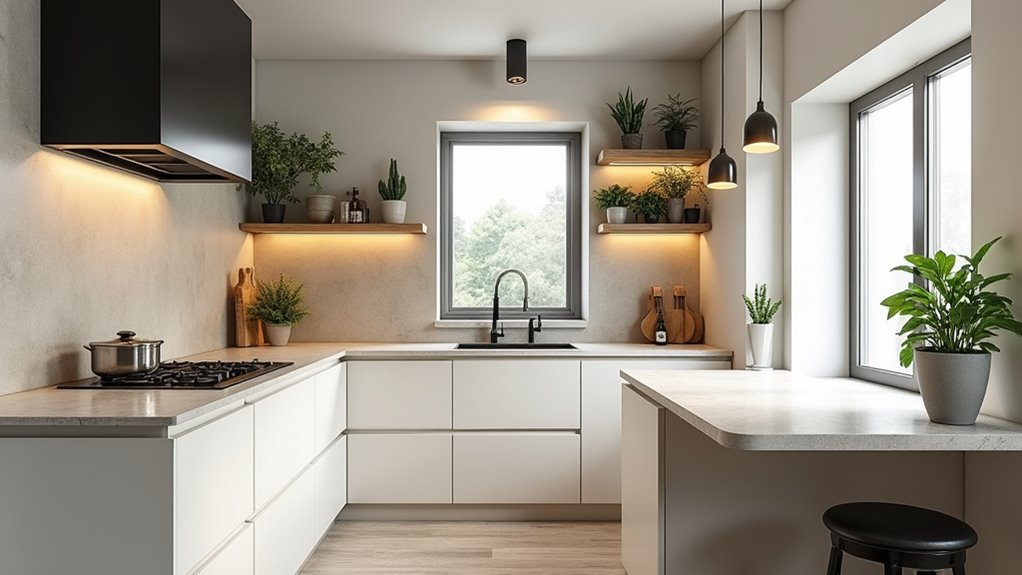
In the quest for maximizing culinary spaces, well-planned kitchen configurations play a crucial role in enhancing both functionality and efficiency. Options such as galley and L-shaped layouts optimize space while maintaining an efficient work triangle, facilitating seamless cooking flow.
Compact prep surfaces, including portable trolleys and butcher blocks, ensure versatility without sacrificing valuable real estate. Storage solutions like pull-out shelves and wall-mounted hooks liberate countertops, enhancing organization. The selection of slimline appliances further minimizes clutter.
Expansive color schemes, with lighter tones for cabinetry and flooring, create an illusion of spaciousness, while adequate lighting—combining natural sources and layered fixtures—promotes a welcoming atmosphere.
Thus, integrating smart design ensures compact kitchens remain both functional and inviting.
Sustainable Materials and Finishes
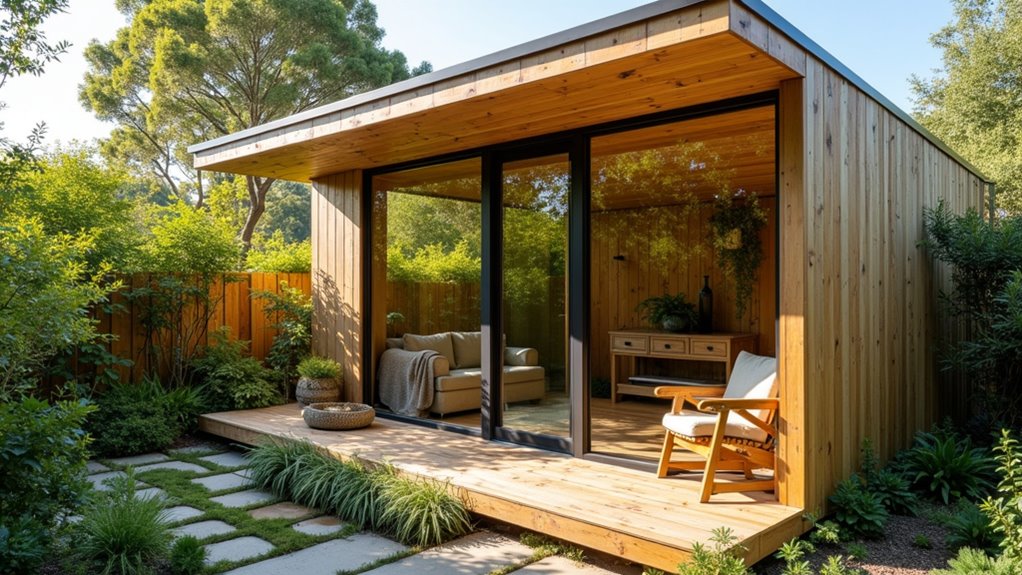
While the appeal of compact house designs lies in their efficient utilization of space, the choice of sustainable materials and finishes elevates these homes to a new level of environmental consciousness.
Homeowners can contribute to eco-friendly living through sustainable sourcing and using innovative materials that reduce the ecological footprint. Key options include:
- Thermowood: Offers durability with a low carbon footprint.
- Reclaimed Wood: Utilizes existing materials to minimize waste.
- Low-VOC finishes: Ensure health-conscious indoor air quality.
Incorporating such elements enhances both aesthetic appeal and functionality, proving that small spaces can maintain a strong commitment to sustainability.
Smart Home Integrations for Efficiency
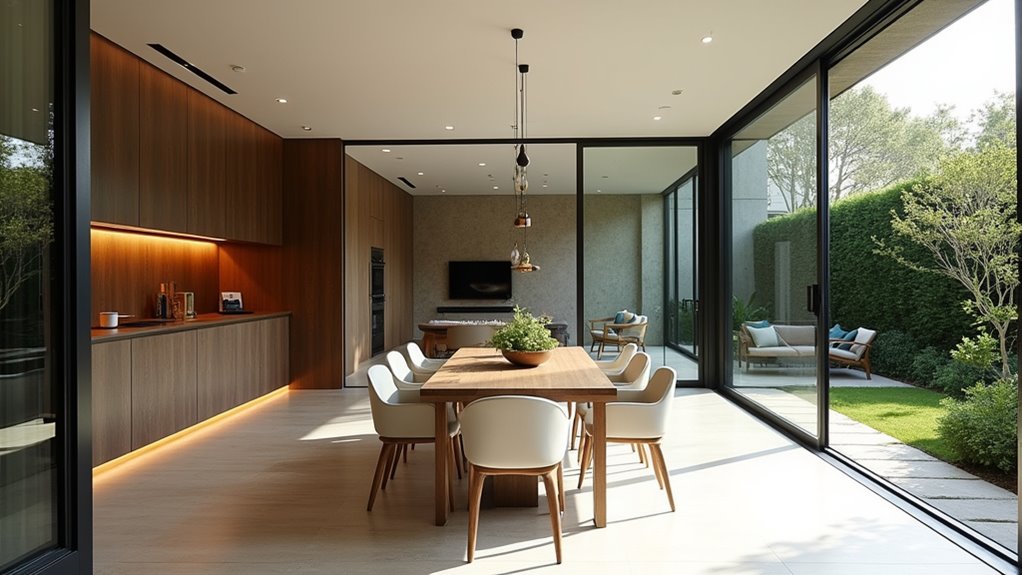
Embracing the advancements of modern technology, smart home integrations are revolutionizing the concept of efficiency in compact living spaces. Smart thermostats adjust temperature based on user habits, optimizing energy consumption while reducing costs. Voice control features enhance user experience, allowing seamless interaction with devices for lighting, climate control, and security.
| Feature | Benefit |
|---|---|
| Smart Thermostats | Learns preferences for efficiency |
| Motion-Sensing Lights | Activates only when necessary |
| AI Assistants | Automates routines and tasks |
| Predictive Controls | Adjusts HVAC based on occupancy |
| Smart Security | Remote monitoring via voice |
As the smart home market grows, these integrations promise a blend of convenience and sustainability, adapting to the unique needs of small living environments.
